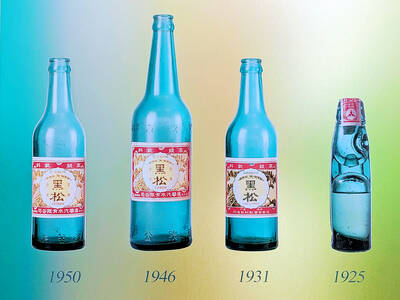Japanese director Hirokazu Kore-eda is known to the world for his humanist creations such as After Life (1998), Nobody Knows (2004) and most recently Still Walking (2008). At first glance, Air Doll, his latest feature, may seem a bit too titillating for the director’s taste. Based on a 20-page graphic short story by manga artist Yoshiie Gouda, the film is a dark modern fairy tale about a life-size inflatable doll who takes on a life of her own.
Sex is definitely there, both in human and sex-doll terms, but Air Doll is more of a poetic meditation on the human condition punctuated with charming humor and heart-rending despair. Polished and structurally diffused, this rather ambitious film touches on many weighty issues. It is part of the work’s charm but also a flaw as the director seems to hover tentatively over eroticism, feminist allegory and the paucity of
human emotions.
Set in an old Tokyo neighborhood, the film opens with middle-aged Hideo (Itsuji Itao) sinking into the seat of a commuter train, looking worn out. A disgruntled waiter by day, Hideo leads a perfectly happy life at home with Nozomi, an inflatable doll. He tells her everything, bathes her, has sex with her at night and says goodbye to her in the morning.
One day after Hideo leaves for work, the doll starts to blink and morphs into a real woman (Bae Doo-na). Arrayed in a French maid’s outfit, the new Nozomi begins to explore the real world with the innocent curiosity of a small child. As she makes her way through the old quarter, Nozomi comes across a cavalcade of lonely folks as empty inside as her plastic body.
Nozomi soon develops a parallel existence away from Hideo’s apartment by having a daytime job at a small video-rental store where she falls for fellow worker Junichi (Arata). In the evening, she returns home to play the inanimate doll for her master.
Nozomi tries to find meaning in her newly found existence, but even visiting her maker, Sonoda (Joe Odagiri), doesn’t seem to help much. As a sex doll with a heart and mind, Nozomi experiences the joy and pain of being human but realizes that the parallel lives she leads may be incompatible.
Air Doll has all the elements needed for a cinematic musing on urban anomie and solitude — a heroine who is replaceable, an eerie, dreamlike electronic score, and an atmospheric locale provided by a run-down neighborhood nudged between ominous high-rises. Even the video store Nozomi works at is a symbol of a culture where images take precedence over real experiences and DVD copies over original film prints.
For his modern fairy tale, Kore-eda gathers a variety of characters to fill in the rather thin narrative and illustrate how empty most people feel inside. Aided by the crystal-clear visuals of Taiwanese cinematographer Mark Lee Ping-bin (李屏賓), the film exudes lightness and buoyancy, but sometimes lets the poetry run too wildly and the narrative weight diffuse. Consequently, the “we are all alone and hollow” spiel mostly falls flat. Not even the doll’s simple rhetoric on humanity and the orations of an old poet can redeem the film’s existential musing from being as hollow as the protagonist and cute as a children’s book.
Beneath the yarn’s limpid surface, an undercurrent of eroticism bubbles and threatens to erupt at any minute. That the film is about a sex doll makes it Kore-eda’s most erotic creation to date. Erotic tension is indeed felt throughout the movie, though the director doesn’t flirt with the sexual subtext. Examples can be found in the two scenes where Nozomi or her owner scrub her detachable vagina in soapy water rendered in a matter-of-fact manner.
Masterfully cast, South Korea actress Bae Doo-na manages to simultaneously exude a childlike innocence and a disturbingly infantilized sexuality as a life-sized plaything designed to pleasure men. It would be interesting to know whether Kore-eda’s choice of casting a South Korean actress as a sex doll was a deliberate critique of the sexual slavery practiced by the Japanese military during World War II.
Despite its flaws, Air Doll makes an effective social commentary if one applies a focused, albeit rudimentary, feminist reading to the story about a sex doll gaining autonomy over her body and mind: first through consumerism, then through discovering how to reach orgasm and finally via the realization that her actions have consequences.
One such consequence ultimately leads to a climactic finale that is sickly humorous and fascinatingly horrific that makes the two hours spent watching the film worth the wait.

Behind a car repair business on a nondescript Thai street are the cherished pets of a rising TikTok animal influencer: two lions and a 200-kilogram lion-tiger hybrid called “Big George.” Lion ownership is legal in Thailand, and Tharnuwarht Plengkemratch is an enthusiastic advocate, posting updates on his feline companions to nearly three million followers. “They’re playful and affectionate, just like dogs or cats,” he said from inside their cage complex at his home in the northern city of Chiang Mai. Thailand’s captive lion population has exploded in recent years, with nearly 500 registered in zoos, breeding farms, petting cafes and homes. Experts warn the

The unexpected collapse of the recall campaigns is being viewed through many lenses, most of them skewed and self-absorbed. The international media unsurprisingly focuses on what they perceive as the message that Taiwanese voters were sending in the failure of the mass recall, especially to China, the US and to friendly Western nations. This made some sense prior to early last month. One of the main arguments used by recall campaigners for recalling Chinese Nationalist Party (KMT) lawmakers was that they were too pro-China, and by extension not to be trusted with defending the nation. Also by extension, that argument could be

Aug. 4 to Aug. 10 When Coca-Cola finally pushed its way into Taiwan’s market in 1968, it allegedly vowed to wipe out its major domestic rival Hey Song within five years. But Hey Song, which began as a manual operation in a family cow shed in 1925, had proven its resilience, surviving numerous setbacks — including the loss of autonomy and nearly all its assets due to the Japanese colonial government’s wartime economic policy. By the 1960s, Hey Song had risen to the top of Taiwan’s beverage industry. This success was driven not only by president Chang Wen-chi’s

The centuries-old fiery Chinese spirit baijiu (白酒), long associated with business dinners, is being reshaped to appeal to younger generations as its makers adapt to changing times. Mostly distilled from sorghum, the clear but pungent liquor contains as much as 60 percent alcohol. It’s the usual choice for toasts of gan bei (乾杯), the Chinese expression for bottoms up, and raucous drinking games. “If you like to drink spirits and you’ve never had baijiu, it’s kind of like eating noodles but you’ve never had spaghetti,” said Jim Boyce, a Canadian writer and wine expert who founded World Baijiu Day a decade